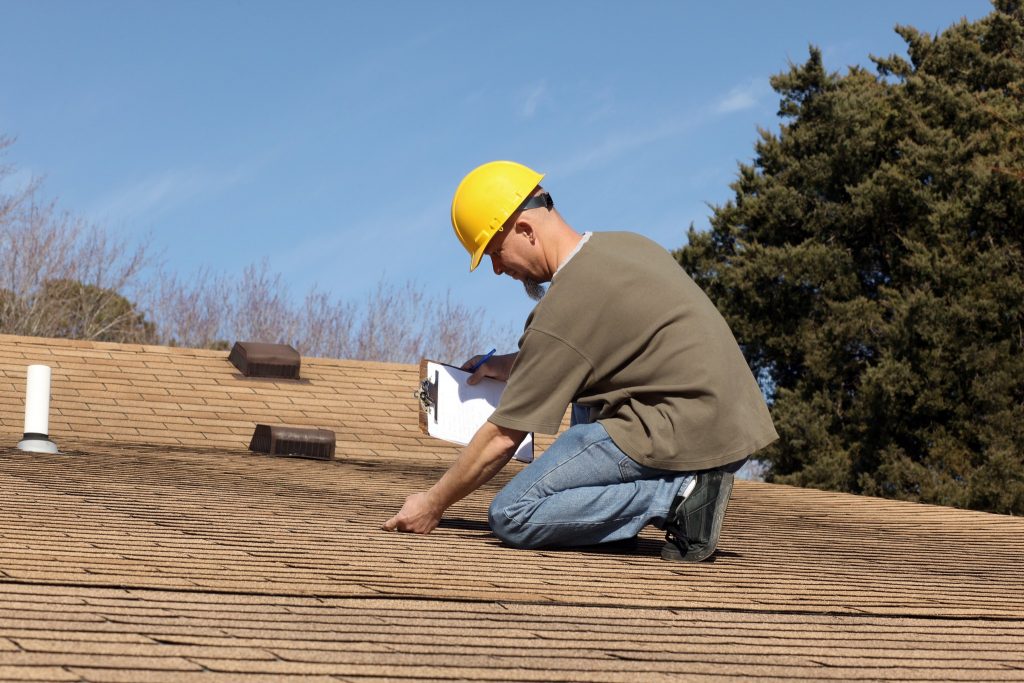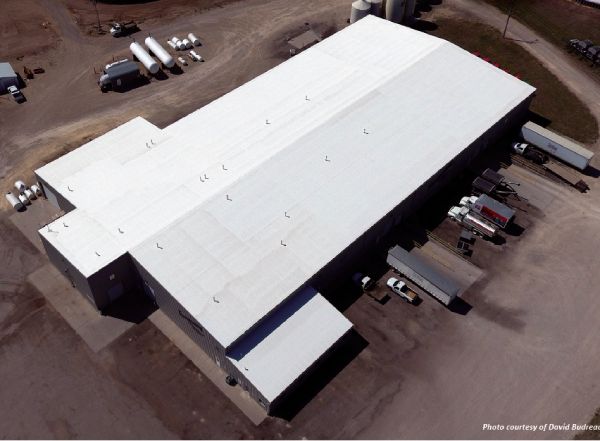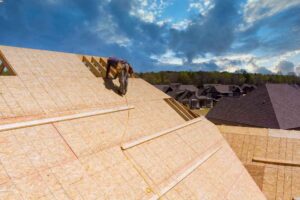Roofing Installation: What Homeowners Need to Know Before Starting
Roofing installation is a significant investment that can dramatically enhance your home’s protection and curb appeal. Before you begin, it’s essential to understand the scope of such an undertaking. Replacing a roof isn’t just slapping on some shingles — it’s about ensuring longevity, efficiency, and most importantly, safety for everyone beneath it. A well-installed roof defends against the elements and can improve your home’s overall energy efficiency, potentially lowering heating and cooling costs.
The selection of materials is one of the first major decisions you’ll make. From traditional asphalt shingles to sleek metal panels or eco-friendly green roofing, options abound. Each comes with its own set of benefits, costs, and aesthetic appeal. Do your research or consult a professional to determine which material aligns with your local climate, budget, and home style. Remember, the materials you choose play a critical role in the roof’s performance and lifespan.
But it’s not just about the materials; the expertise of those doing the installation is crucial. Finding the right contractor can be the difference between a stress-free process and a troublesome project. Look for certified and insured roofing professionals with a track record of quality workmanship. Don’t hesitate to ask for references and consider reading reviews from past customers. Clear communication about timelines, costs, and expectations will also help ensure a smooth installation experience.
Recognizing When You Need a New Roof
Understanding the signs of roof damage or aging is crucial to maintaining the safety and integrity of your home. Several indicators might suggest it’s time to consider a new roof installation. Visually inspect your roof regularly for signs such as missing, cracked, or curling shingles. Look out for bald spots where granules are missing, as well as any dark streaks which may be caused by airborne algae. Inside your home, signs of roof failure can include light coming through the attic, stains on ceilings or walls indicating water damage, and sagging areas, especially along the roofline.
Conducting a simple home roof inspection can be done safely from the ground using binoculars or by carefully using a ladder to get a closer view. Start by examining the roof for any signs of unevenness or sagging. Check the gutters and downspouts for shingle granules — a large amount can indicate excessive wear. Pay particular attention to the roof’s flashing — the thin metal strips around chimneys, skylights, and vents — as this is a common area for leaks to start. If you’re comfortable doing so, a closer inspection in the attic for any signs of water intrusion or daylight peeking through the roof boards can offer further insights into the roof’s condition. If you notice any of these signs or cannot safely inspect the roof yourself, it’s a good idea to consult a professional roofing contractor for a more thorough assessment.

Understanding the Types of Roofs
When considering a new roof for your home, understanding the different types of roofing systems is crucial. The roof type not only influences the aesthetic appeal of your home but also plays a significant role in its protection against various weather conditions. Here are some common roofing types:
- Asphalt Shingles: The most popular choice in many countries due to their cost-effectiveness and simplicity of installation. They come in a variety of colors and styles to match almost any home design.
- Metal Roofing: Known for its durability and resistance to extreme weather, metal roofing is becoming increasingly popular. It can be more expensive than asphalt but offers a longer life span and can significantly increase a home’s value.
- Tile Roofing: Clay and concrete tiles add texture and elegance to a roof. Heavy and durable, they are ideal for climates with hot weather or where salt air is prevalent. However, they require a robust support structure due to their weight.
- Slate Roofing: Offering a natural appearance and exceptional durability, slate is among the most premium roofing materials. It’s heavy, expensive, and requires a skilled installer, but a well-constructed slate roof can last for centuries.
- Wood Shingles and Shakes: These provide a natural look that ages into a beautiful grayish silver. While wood shingles offer a classic aesthetic, they require maintenance to prevent decay and aren’t suitable for all climates.
- Flat Roofs: Common in modern and commercial architecture, flat roofs offer a unique look and usability for rooftop gardens or leisure areas. They require specific materials like EPDM (rubber), PVC, or TPO to ensure water resistance and durability.
Research and Planning
Before hammering the first nail, thorough research and comprehensive planning are crucial steps for homeowners. Start by understanding your local building codes related to roofing. These regulations can significantly influence your choice of materials and the installation process. Next, consider the timing of your project. Roof installations can be weather-dependent, with spring and fall often being the most favorable seasons due to milder temperatures and lower chances of rain.
Equally important is budget planning. A new roof is a major financial commitment, and costs can vary widely based on material, labor, and the size of your roof. Obtain multiple quotes from reputable contractors to get a realistic idea of the expenses involved. This will also provide an opportunity to negotiate better terms or find cost-saving options that don’t compromise on quality.
Additionally, prepare for the project by discussing it with your household. Construction can be disruptive, and knowing what to expect will help minimize stress. This is also the right time to ascertain if temporary measures, such as protective coverings for your valuables or arrangements to minimize noise, are needed.
Budgeting
Cost Breakdown: What Goes into the Price of a New Roof?
Understanding the cost elements of installing a new roof is crucial for homeowners to prepare adequately for this significant investment. The primary factors influencing the price include:
- Materials: This can vary significantly depending on whether you choose asphalt shingles, metal roofing, or alternative materials like clay tiles or wood shakes. High-quality, durable materials will cost more but can offer better longevity and less need for repairs.
- Labor: The complexity of your roof, its pitch, and the size will dictate the labor costs. More complex installations require skilled craftsmanship and more time, increasing the price.
- Removal of Old Roofing: In many cases, the old materials must be removed before installing the new roof, which can add to the overall cost.
- Waste Disposal: The cost of disposing of the old roofing materials can also add up, depending on the local regulations and fees.
- Permits and Inspections: Depending on your location, you might need to acquire permits, and your new roof may need to pass inspections, both of which can influence the cost.

Financial Planning for Roofing Projects: Tips on Saving and Budgeting
- Get Multiple Quotes: Always obtain quotes from several contractors to compare prices and services. This could also give you leverage for negotiating better prices.
- Choose the Right Time: Off-peak seasons can be cheaper for roof installations due to lower demand. However, you must balance this with the weather conditions in your area.
- Consider Financing Options: Look into loans, home equity lines of credit, or government grants that may be available for home improvements to spread the cost over time.
- Prioritize Quality Over Cost: While it’s tempting to go with the cheapest option, investing in quality materials and skilled labor can save money in the long run due to fewer repairs and replacements.
- Set Aside a Contingency Fund: Unexpected costs can arise during roofing projects. Having a contingency fund of around 10-20% of the project’s total estimate can help cover these unforeseen expenses.
Hiring Professionals
Finding the Right Contractor: Vetting and Hiring Trustworthy Professionals
Choosing the right contractor is possibly the most critical step in your roofing project. You want someone reliable, experienced, and reputable. Start by asking friends and family for recommendations and searching for local contractors with high ratings and positive reviews online. When you’ve narrowed down your options, it’s essential to interview each contractor. Ask about their experience, licensing, insurance coverages (liability and workers’ compensation), and request to see a portfolio of their previous work. Check if they are certified by any roofing manufacturers, which can be an indicator of quality and expertise. Finally, verify their references by contacting past clients to inquire about their satisfaction with the work performed.
Contract Essentials: What Your Agreement with a Roofing Contractor Should Include
Once you’ve selected a contractor, ensuring that your agreement clearly outlines the project’s scope, materials to be used, timelines, and costs is crucial. Your contract should include:
- Comprehensive Description of the Work: Detailed information about the work to be performed, including removal of the old roof, roof repairs, and installation of the new roof, with specifics about the materials and techniques to be used.
- Project Timeline: Start and end dates, including any milestones and conditions that might affect the timeline (e.g., weather conditions).
- Costs and Payment Schedule: A breakdown of the total cost, including labor, materials, permits, and waste disposal, alongside a clear payment schedule outlining when and how payments should be made.
- Warranty Information: Details of the manufacturer’s warranty on materials and the contractor’s warranty on workmanship should be explicitly stated.
- Insurance and Licenses: Confirmation that the contractor holds the necessary insurance and licenses to perform the work legally and safely.
- Permit Acquisition: Clarification on who is responsible for obtaining necessary permits and ensuring that the project passes any required inspections.
- Change Order Process: A defined process for handling any changes to the work scope, including how these changes will affect costs and timelines.
- Dispute Resolution: A method for resolving any disputes that may arise, often through arbitration or mediation, before resorting to legal action.
Preparing for Installation
Timeline Expectations: Understanding the Roofing Process
A roofing project’s timeline can vary significantly based on the size of the roof, the complexity of the job, weather conditions, and the specific roofing materials being used. Generally, the process begins with a comprehensive inspection and the removal of the old roof, which can take a day or two for an average-sized home. The installation of the new roof typically requires an additional 3 to 4 days, depending on the roofing material and complexity of the installation. However, it’s crucial to have a clear timeline from your contractor to manage expectations accurately. Delays can occur due to unforeseen structural issues, bad weather, or backordered materials, so flexibility and patience are essential.
Preparing Your Home for Installation Day: A Checklist for Homeowners
To ensure a smooth roofing installation process, homeowners can take several preparatory steps:
- Clear the Area: Move vehicles, patio furniture, and any loose items in your yard away from the area under the roofline to prevent damage and give contractors clear access.
- Protect Valuable Items: Inside your home, consider covering items in the attic with a tarp or plastic sheeting to protect them from dust and debris.
- Safety First: If you have children or pets, make arrangements to keep them safely away from the work area. Construction sites pose various hazards, and it’s best to limit access to the area being worked on.
- Access to Power Outlets: Contractors may need access to exterior power outlets or occasionally need to run an extension cord from inside your home.
- Notify Your Neighbors: Out of courtesy, inform your neighbors about the project in advance. The noise and presence of contractors can impact them as well.
- Trim Trees and Landscaping: Trimming any branches hanging over your roof and cutting the grass short can facilitate easier cleanup of nails and debris.
- Discuss with Your Contractor: Finally, have a pre-installation meeting with your contractor to go over any last-minute details, confirm the project timeline, and discuss how they will handle daily cleanup and debris disposal.
Additional Considerations
Handling Roofing Permits: Navigating the Legal Requirements
Obtaining the necessary permits is a crucial step in the roofing process. Roofing permits are required by most local jurisdictions to ensure that the work is carried out according to the current building codes and safety regulations. The responsibility for acquiring these permits often falls to the contractor, but it is vital for homeowners to verify that all legal documentation is in place before work begins. Failing to secure the required permits can lead to fines, delays, and even the forced removal of completed work. Homeowners should discuss the permit process with their contractor and might also consider contacting their local building department for further clarification.
Common Pitfalls to Avoid: Mistakes Homeowners Can Avoid During the Roofing Process
The complexity of roofing projects can lead to several potential pitfalls for homeowners. One common error is selecting a contractor based solely on price without considering qualifications, experience, and reputation. This can result in subpar work that may require costly repairs down the line. Homeowners should carefully vet potential contractors, including checking references and verifying insurance and licensing.
Another mistake is neglecting to read and understand the contract fully before signing. It’s crucial to ensure that the contract contains detailed project descriptions, timelines, warranty information, and a clear payment schedule. Being unaware of the specifics can lead to misunderstandings and disputes.
Skipping a pre-installation meeting is also a misstep. This meeting is an opportunity to clarify expectations, discuss the timeline, and address any last-minute concerns. Without this communication, there’s a higher risk of issues arising that could impact the project’s success.
Lastly, assuming that the lowest estimate is the best option is a fallacy. It’s essential to compare quotes carefully and consider what is included in each proposal. A lower initial estimate might not cover all aspects of the job or might use inferior materials, costing more in the long term.
Conclusion
Navigating the complexities of a roofing project requires thorough preparation, clear communication, and the right choice of contractor. By understanding the fundamental aspects of the roofing process, from the initial consultation to the installation and beyond, homeowners can ensure a smooth and successful experience. It’s essential to prioritize not just the cost but the quality of work, reliability of the contractor, and adherence to safety and legal standards. Preparing your home for the installation, knowing what to expect during the project, and avoiding common pitfalls further safeguard your investment. Remember, a well-executed roofing project not only enhances the aesthetic appeal and functionality of your home but also contributes to its long-term value. With careful planning and the right partnership, you can look forward to the peace of mind that comes with a durable and beautifully installed roof.






